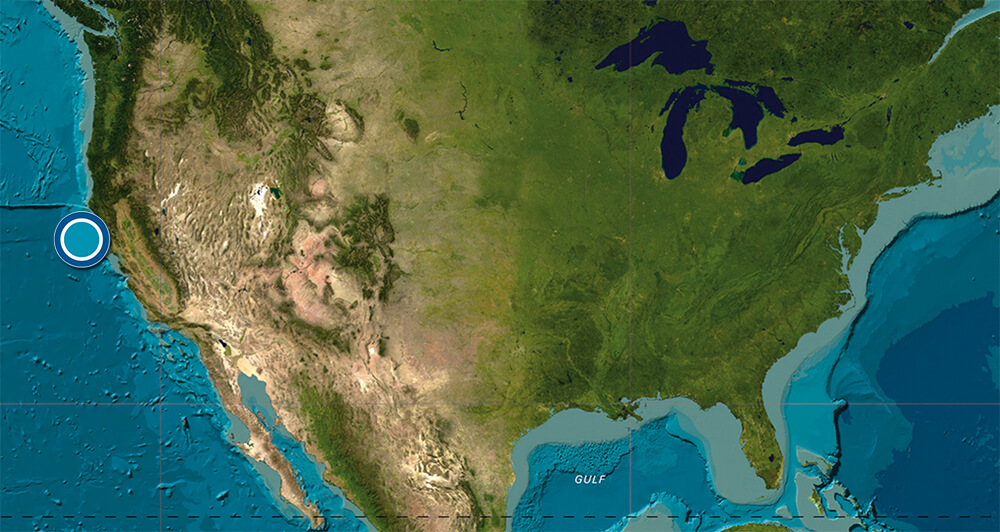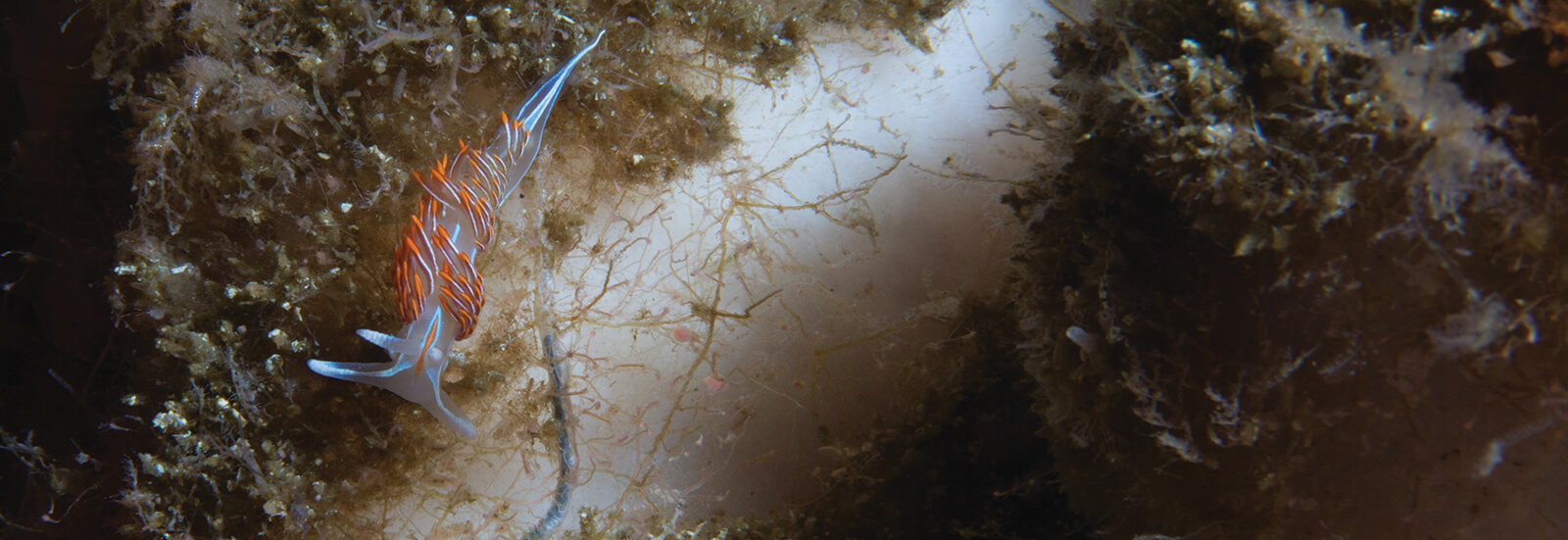Cordell Bank National Marine Sanctuary

Location: 52 miles west-northwest of San Francisco
Size: 1,286 square miles
Designated: 1989 (expanded 2015)
Habitat: Continental shelf and slope, deep-sea canyon, open ocean, rocky reefs
Visit Website


Photos (clockwise from top right): Matt Vieta/BAUE; Robert Lee/BAUE; Kip Evans
You might not expect it, but in the cold, deep waters off of Northern California, a technicolor paradise awaits. This is the rocky habitat of Cordell Bank.
Cordell Bank sits at the edge of the continental shelf and rises abruptly from the soft sediments to within 115 feet of the ocean surface. The craggy ledges here provide a home to colorful and abundant invertebrates, algae, and fishes. Bright pink strawberry anemones cling to the rock, while thousands of juvenile rockfish shelter among them.
Cordell Bank National Marine Sanctuary doesn’t just protect Cordell Bank itself, though. In 2015, the sanctuary expanded north and west to include additional waters and submerged lands, such as the deep-sea Bodega Canyon. These productive waters attract migratory seabirds and marine mammals from all around the Pacific Ocean to feed in this dynamic food web.
Because of its depths and strong currents, Cordell Bank is not accessible to most divers. Still, the sanctuary provides excellent wildlife watching: from June to November, humpback and blue whales feed throughout the sanctuary, and seabirds visit these waters throughout the year. You can also visit the sanctuary without getting wet at the Oakland Museum of California, the Bear Valley Visitor Center, and the Point Reyes National Seashore Lighthouse.


